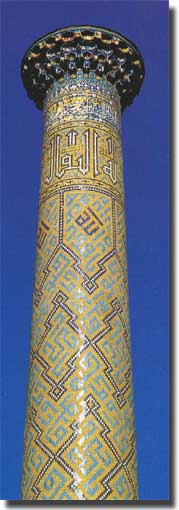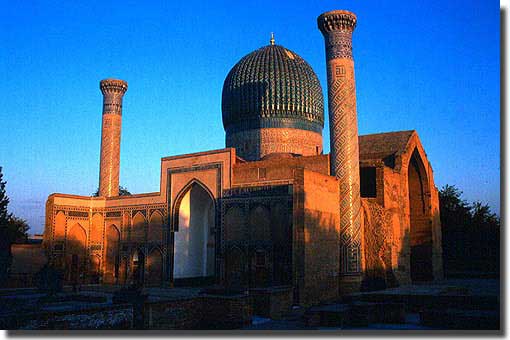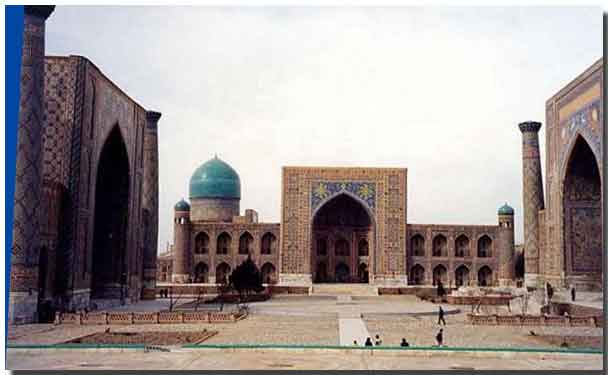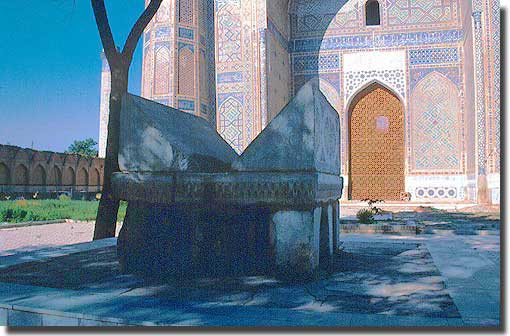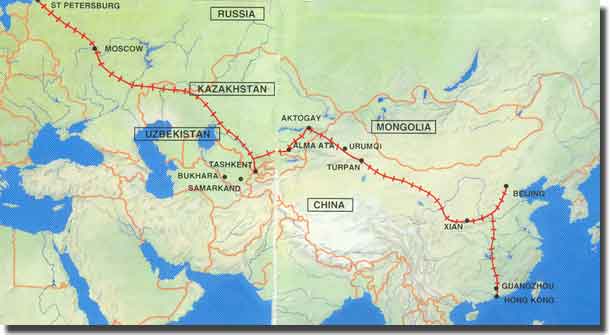|
Passport to the World over 64 years. Pages from my Travel Diary
Samarkand, sitting in the very centre of Asia. Tuesday the 16th. of May 1995
James Elroy Flecker, a quite obscure early 20th. century British Diplomat also carried such a dream, but never fulfilled it, but he is remembered because of his poem, "The Golden Journey to Samarkand" part of which reads:
Today, I was to at long last realise my dream! This ancient city which in 1970 celebrated its 2500th. anniversary, squats slap in the centre of Asia, Alexander was moved by its beauty, Marco Polo admired it, Tamerlaine made it his capital. Samarkand has survived 10 centuries of invasions by Turks, Arabs, and in 1220 Genghis Khan wrecked it. Tamerlaine drew artisans from throughout Asia to develop it, and the Russians arrived in 1868. Registan Square. It was Lord Curzon who said:"If you are not impressed by this noblest of squares, you may as well go home." How very true. In 1405, Tamerlaine was laid to rest in the Gur Emir Mausoleum. In 1941, his tomb was opened, and it was confirmed that he had indeed been lame, the Jade stone over his grave was a single slab, and had come from Mongolia, and the Irian invaders had stolen it, but as it brought bad luck it had been returned, but had been broken into two pieces. An inscription was said to have been found, warning anyone opening this crypt would release the spirit of war.
It was in 1941 that Germany had invaded Russia, only the day after the tomb had been opened. Before we had left on this journey, I did a good deal of reading and research, and had found a report, that stated, in fact, Tamerlaine was not buried beneath the Jade slab, but had been interred down below in the deep crypt. When our group were standing around the Jade slab, now in two pieces, our guide was insisting that it was here, beneath the Jade that Tamerlaine lay, I kept on saying " No he is not buried here!" Finally, my persistence prevailed, we were now taken down steps into a very dark crypt, and it is here that Tamerlaine finally rests. All the tiles that decorate the Mosques and the Madrasahs ( colleges of religion ) are of three basic colours, white to represent water, blue for the sky, and green for nature. My visit to this fabled city did not disappoint me, I found great difficulty in relating the age of places here in central Asia with my Australia. Of course any one lifetime is but a few grains of sand, compared to an endless desert of time here, in Asia, but in particular in Samarkand.
Back to Diary index |

